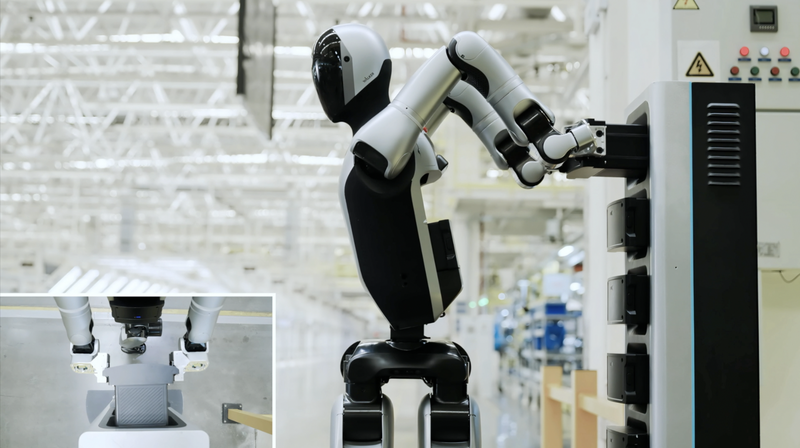In a tech-packed showcase in south China's tech hub Shenzhen, Chinese mainland company UBTech introduced the Walker S2, the world's first humanoid robot equipped with a hot-swappable autonomous battery system.
Mind-blowing footage shows Walker S2 gliding up to a power station, reaching its upper back panels, and pulling out a spent battery pack before slotting in a fresh one—all in under three minutes and without human help. With fresh power packs, the robot can keep running continuously on the assembly line.
This innovation eliminates charging downtime by letting the robot swap batteries on the fly, cutting maintenance costs and boosting production efficiency. “Previously, a major drawback of robots was their limited operation hours—often only around four hours. The battery-swapping technology effectively extends continuous operation time. Otherwise, they have to pause for charging, but the production line can't afford to stop,” said Fan Congming, executive president of the Shenzhen Artificial Intelligence Industry Association.
Experts say this marks a step change for manufacturing. Robots with autonomous energy solutions can handle tasks like assembly, quality inspection, welding, and heavy lifting without breaks. “Companies are now turning to smarter processes: using robots to replace labor in repetitive tasks like moving, polishing, and palletizing in the automotive sector,” said Xing Fan, production manager at a Foshan-based robot manufacturer.
Data from the 2024 World AI Conference in Shanghai shows the Chinese mainland's humanoid robot market hit 2.76 billion yuan (about $385 million) this year. By 2029, it is expected to soar to 75 billion yuan, driven by supportive policies and growing orders from automotive manufacturers.
As automation accelerates across the globe, innovations like Walker S2's self-servicing design point to a future of non-stop, cost-efficient production lines—paving the way for humanoid robots to expand from factories into service roles and even homes.
Reference(s):
China unveils first humanoid robot that can change its own batteries
cgtn.com

